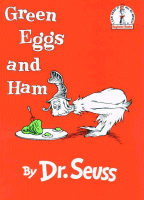
Recent responses to my contest post :
From Russell Perkin:
Joe, I vaguely mentioned the Spielberg War of the Worlds in relation to romance in an earlier post. Looking more specifically at your list, like most Spielberg films it features a disintegrating family and a threatened child. Dakota Fanning’s panic attacks and terror are one of the reasons it is such a gripping film. Most of the film is a stage 3 descent, covering most of the bases in the list, with destruction of the domestic world, reduction of human beings to animal-like fighting for resources, scenes of apocalyptic destruction, and most vividly a descent into the belly of the monster (Tom Cruise taken inside the tripod, escaping and leaving a hand grenade behind).
As for the recognition scene at the end of the film, there is an element of parody in the way the Boston ex-in-laws have been unscathed through all the horror, looking in the final scene like something out of an LL Bean catalogue while Tom Cruise and his daughter have been to the depths of hell and back!
I have some material on Frye and Graham Greene that I will be posting soon that relates directly to this contest/game.
From Clayton Chrusch:
There are a lot of images of ascent and descent in Green Eggs and Ham by Dr. Seuss.
The unnamed protagonist thinks he is someone who does not like green eggs and ham, which is a loss of identity, irrational anger, and a rash vow all at once that drives him from home in pursuit of his lost identity, or rather in flight from his proper identity into a world of trees and foxes (forests and animals) and increasing distance from home and family. Throughout there is a doubling of his identity with Sam-I-am, his other and better self whom he has alienated by choosing not to like. He descends into a cave and encounters a goat (an oracular animal helper). He then is involved in a shipwreck and descends into the ocean where the whole circus that has been following him falls away and with his last breath he denies liking green eggs and ham, a judgement and death.
At this point the ascent, primarily an escape, begins. Floating on the ocean, the protagonist rejects his persistent ignorance (revolt of the intelligence), recognizes that he does like green eggs and ham, takes the plate from Sam-I-am (reversal of twins), discovers his true identity as a lover of green eggs and ham, comes out of the water (recovery from the sea). The name “Sam-I-am” is used towards the end to suggest that the protagonist has discovered his true name, which I think is the significance of the final words: “Thank you!/Thank you,/Sam-I-am!” (a higher state of identity, breaking of enchantment).
From Russell Perkins:
“Floating on the ocean”: the protagonist is “a fragile container of sensitive and imaginative values threatened by a chaotic and unconscious power below it” (CW 17:89) aka a drunken boat.
From Clayton Chrusch:
Thank you so much for that quote Russell. Now that I’ve heard the main character of Green Eggs and Ham described as “a fragile container of sensitive and imaginative values threatened by a chaotic and unconscious power below it,” my life is complete.
From Trevor Losh-Johnson:
I would suggest that Milton’s Satan is an example of both structures aligning. His basic course is his awaking in Hell, constructing Pandemonium, encountering Sin and Death (a parody both of God’s creation of the Son and of Eve from Adam), escaping Hell’s gates and disguising himself to intrude into Paradise, all followed by his return to Hell and subsequent punishment- this course oscillates between both structures and hits all the major buttons. The wrath of God engenders a parodic structure of demonic doubles. Satan’s escape involves a sequence of disguises akin to Ovidian metamorphosis. His remembrance of his former glory as Lucifer reinforces his resolve towards evil. The temptation of Eve is extremely sexual and ends in Eve’s and Adam’s recognition of their nakedness, displacing their original, innocent identities. Satan’s final return to Hell culminates is a scene of punishment, where the parody is punished by a parody of his deeds in the garden. Beyond this, the enchantment of Man’s fall may only be broken by the submission of the Son to be sacrificed to Death.
. . . It is certainly no contender compared to Clayton’s post, but I think any day Dr. Seuss beats Milton is worthwhile enough
